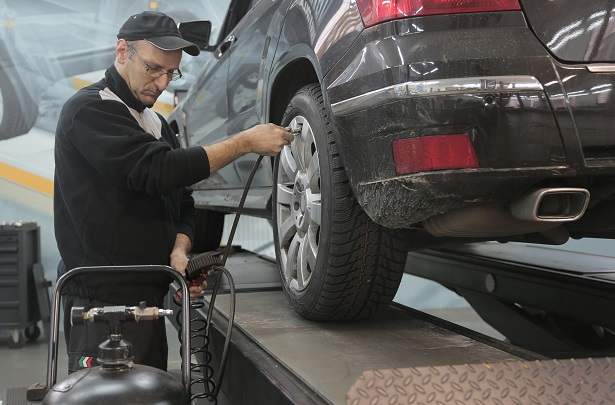
With South African roads being notoriously dangerous during the holidays, performing a vehicle inspection should be part of anyone’s road trip planning process. As many accidents are caused by poor vehicle maintenance, we can’t stress enough how important it is to take extra precautions before embarking on your journey.
In this holiday safety guide, we share some valuable advice on what to include in your vehicle inspection to help identify potential hazards and prevent additional damage before it happens. We recommend doing a vehicle inspection at least two weeks before you go on holiday as this will give you ample time to arrange repairs if necessary.
What To Include In Your Pre-Holiday Vehicle Checklist
It is essential to ensure that your vehicle is in good working order and safe to drive, not only for your own safety but also for the safety of other motorists on the road. Here is a list of 12 things to check during a vehicle inspection before going on holiday:
- Lights and indicators
- Brakes
- Tyres (pressure, tread wear and physical damage)
- Look for visible leaks
- Fluid levels and pipes
- Belts and hoses
- Spark plugs, battery terminals and the air filter
- Electronic components
- Exhaust parts
- Wiper blades and windscreen
- Vehicle Safety Equipment
- Car Insurance
Check All The Lights
During your vehicle inspection, make sure that all of the lights are working properly, including the headlights, taillights, indicators and hazard lights. Check the instruments on your dashboard to ensure they provide correct readings of speed, and fluid level warnings. At the same time, inspect the controls and switches for the lights, wipers, mirrors and demisters.
Brake Inspection
Brakes are essential for safe driving, so make sure that they are in good working order. Check for any signs of wear or damage, and if necessary, have the brakes checked by a professional, including the handbrake. Any uneven wear, strange noises or vibrations from your vehicle’s braking system should be checked and fixed as soon as possible.
Check Your Tyres
When performing a vehicle inspection, make sure that the tyres have sufficient tread and are properly inflated. If the tyres are worn or underinflated, it can affect the handling and stability of the vehicle, which can be dangerous, especially when driving long distances. Check for any physical signs of damage such as bulges, cracks or slow punctures and don’t forget about your spare tyre, if your vehicle has one.
Look For Possible Leaks
Check for any visible oil or coolant leaks on the ground. If you see any during your vehicle inspection, have them fixed by a professional as soon as possible.
Inspect Fluid Levels And Pipes
Examine the pipes and hoses for any signs of wear or damage and check the fluid levels to ensure that they are full. It is important to have the right level and type of fluid in your vehicle as this will help lubricate important components and avoid potentially serious and expensive damage.
Check Belts And Hoses
Belts, hoses, and other rubberised parts can become brittle over time, so it is important to check them for any signs of wear or damage before going on holiday. If you see anything out of the ordinary, book a vehicle inspection with a professional immediately.
Spark Plugs, Battery Terminals And Air Filter
The spark plugs are responsible for igniting the fuel and air mixture in your engine, so it is important to ensure that they are in good condition. Check the battery terminals to make sure that they are clean and free from corrosion. Finally, check the air filter for any signs of dirt or debris as this could impact your vehicle’s performance.
Inspect Electronic Components
Check all the electronic components in your vehicle, including your air conditioning, the radio, GPS system and sensors. These systems are responsible for providing information and warnings about your vehicle’s performance and keeping you as comfortable as possible, so it is important to make sure that they are working correctly.
Exhaust And Suspension
Check the exhaust system for any signs of leaks or damage. Rusty or damaged parts can be potentially dangerous and affect vehicle performance and fuel consumption issues while posing serious health risks. If you notice anything that may need attention, visit your nearest service centre for a professional vehicle inspection.
Wiper Blades And Windscreen
Finally, check your wiper blades to ensure they are in good condition and able to provide clear visibility in adverse weather conditions. Also, check the windscreen for any cracks or chips that need to be repaired as they can deteriorate while driving which could impact visibility.
Vehicle Safety Equipment
Check that all the seatbelts are working and the airbag settings as you can disable certain airbags in some cars. In the event of a breakdown, make sure you have a reflective triangle or flashlight in the boot to warn other motorists and avoid potential collisions.
Check Vehicle Insurance
Before heading off on holiday, the last check to perform on our vehicle inspection list is car insurance. Make sure you have a valid car insurance policy to cover you in the event of an accident or breakdown. Remember to have all the necessary emergency numbers close at hand and follow the safety tips when driving in South Africa.
Performing a vehicle inspection prior to driving can help ensure a smoother and safer journey. Taking the time to check for any signs of wear or damage can save you from costly repairs and may even save your life. By following the steps in our vehicle inspection guide, you can have peace of mind knowing that you are prepared for the journey ahead.

